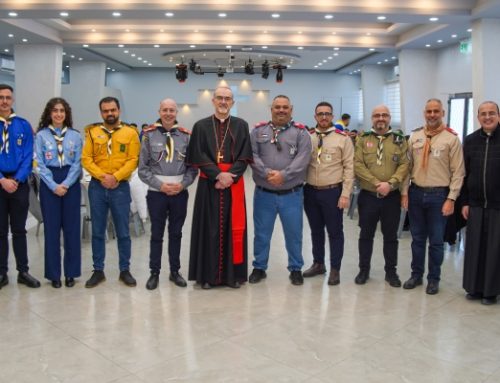Two cultural heritage initiatives have been launched by the Assyrian Cultural and Social Youth Association (ACSYA) and the Mesopotamia Group.
As part of its efforts to preserve Assyrian heritage, Jennifer Shahin from ACSYA says the association is keeping alive traditional Assyrian clothing.
Most of the world’s Assyrians numbering between two and four million live around their traditional homeland, which comprises parts of northern Iraq, Syria, Turkiye and Iran.
In recent years, many have fled to neighbouring countries to escape persecution from both Sunni and Shiite militias during the Iraq War and, most recently, by ISIS.
Members of the Assyrian diaspora are spread out all over world. According to the 2021 Census data released by the Australian Bureau of Statistics, 60,000 people identified as being of Assyrian Neo-Aramaic and Chaldean Neo-Aramaic origins, in Australia.
‘Garments of Assyria’
A project called “Garments of Assyria”, which began last year, seeks to collect and preserve Assyrian costumes from Iraq, Syria, and southeastern Turkiye.
“We currently own seven garments and have ordered another one from Paris and we look to have more in the future depending on the research we do of different villages, their clothes and who’s currently making (outfits) around the world,” Ms Shahin said.
The costumes are mostly sewn in villages in northern Iraq then sent to Australia.
Each town and village in northern Iraq and northeastern Syria has a distinctive type of clothing and colour scheme.
The costumes have been collected from the Al-Qosh region (northern Iraq) as well as the Tel Kaif region (northern Iraq), whose costumes were also distinctive, and from the Qaraqosh region (Baghdidah).
Finding seamstresses can be difficult
But collecting the costumes was not without difficulty, according to Ms Shahin.
There may only be one skilled person in each village, under the best conditions, who is making these costumes in Iraq and Syria right now, Ms Shahin said.
Further, some traditional costumes are also difficult to obtain due to the migration of those who manufacture them to Europe.
“We asked, for example, a person who is currently in France (an Assyrian immigrant) to manufacture a Khamalah costume,” Ms Shahin said.
However, the problems did not end here, because even after finding the right person to manufacture a particular costume, it prolonged the time required to get the outfit to Australia, she said.
Traditional fashion is ‘disappearing’
According to Ms Shahin, traditional fashion is “disappearing” because the know how needed to make it is inherited, and not all makers are able to pass on skills to their children.
The aim of acquiring full costume sets is for members of the community to be able to wear them as well as display them during holidays and other special occasions to show current and future generations what their ancestors once wore, she said.
In addition to exhibiting the costumes in the community, the organisation wanted to introduce the wider Australian community to the costumes and their history, Ms Shahin said.
Assyrian costumes from Iraq and Syria were displayed in a hall in the parliament building in Victoria in late March 2023.
Ms Shahin said the colours of the costumes represented the colours of Spring, and, as the Assyrian New Year fell in April, Assyrians wore the colourful clothes in processions to mark the start of their year.
Due to the scale of this project, she said the work had been divided between seven board members and 60 other members.
Ms Shahin noted that many young men and women, particularly those born in Australia, hesitated at first to wear their traditional costumes, but that once they had tried them, they “fell in love” with them.
Music, singing are also part of the Arab and Assyrian heritage
The Mesopotamia Group, which was founded in 2006 in Australia, aims to revitalise Iraqi music and singing.
Founded and led by musician, Raed Aziz, the band has presented traditional songs from all regions of Iraq in concert and events in Australia for more than 16 years.
Mr Aziz said “music is a universal language that does not need translation”.
The band has grown from two people in 2006 to about 16 now, representing most of Iraq’s regions and ethnicities.
“Our presence in Australia has allowed us to develop some Iraqi traditional melodies and introduce some Western musical instruments, which have been well received by the broader Australian community,” Mr Aziz said.






